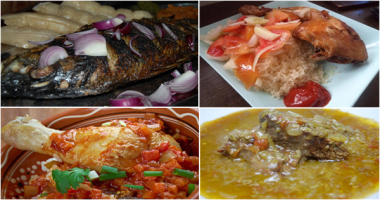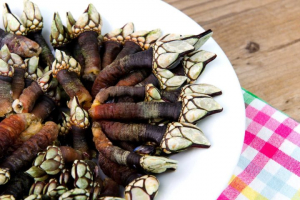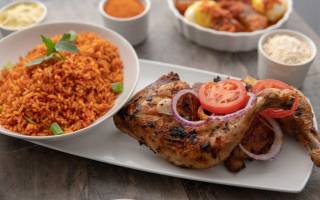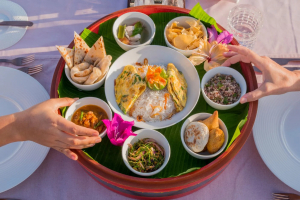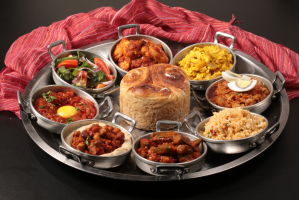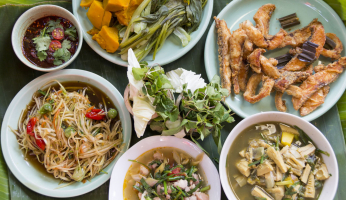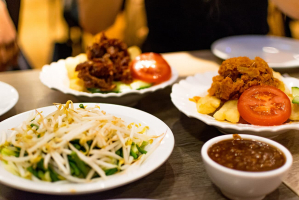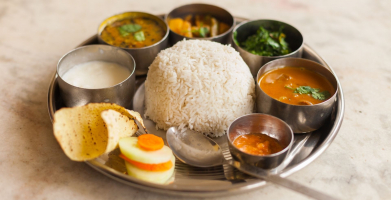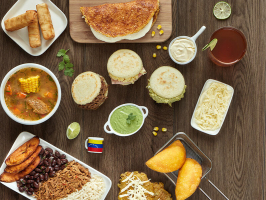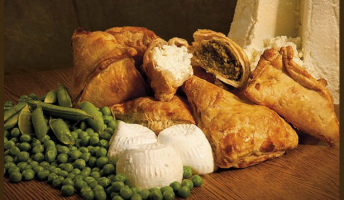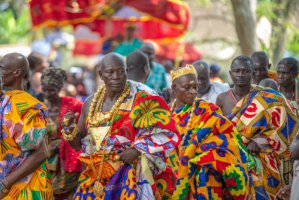Top 12 Ghana's Speciality Foods
The distribution of food crops characterizes traditional Ghanaian diet. With the popularity of tropical produce such as maize, beans, millet, plantains, and ... read more...cassava, most ethnic groups creatively use these nutrients to create delectable recipes for their sustenance. Here are a few meals to get you started with Ghanaian cuisine.
-
Fufu is produced from cassava and either plantain or yam in southern Ghana (where I live). Cassava is a flavorless starchy root that is widely available throughout Africa. The cassava and plantain are first cooked. The mixture is then crushed together using a large mortar and pestle. One person often stands and pounds, while the other sits and mixes the fufu while the pestle is in the air. As a consequence, you'll get a giant sticky ball with a dough-like consistency.
Fufu, like most African and Middle Eastern foods, is often eaten by hand and accompanied with a wonderful sauce/soup. This information may frighten you if you were up in a Eurocentric setting where eating is done with cutlery/silverware. If you've never eaten finger foods before, I recommend "warming up" by being open-minded and possibly starting slowly with Ethiopian finger food, and then working your way up to Fufu, which is a more sophisticated eating experience. Fufu is a hefty dinner, thus it is often eaten on Sunday afternoons in Ghana, when most people have returned after prayers at their separate temples and there is nothing else to do. The concept is that you prepare yourself, eat the meal, preferably with a cool Guinness, Heineken, or water, and then enter a condition of 'Fufu paralysis,' which generally entails a protracted snooze as the Fufu charts its way through your digestive system.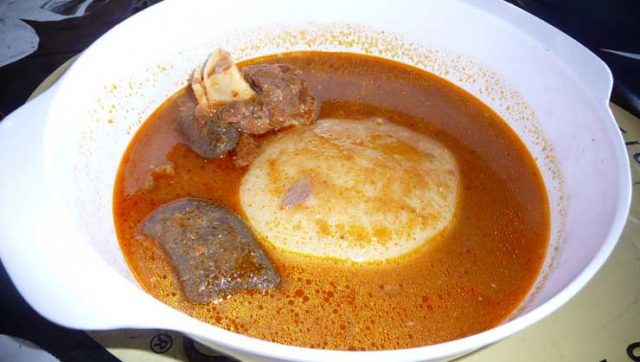
Source: flavorverse.com Source: Chef Lola's Kitchen -
Ampesi refers to a boiling dish of cassava, cocoyam, yam, plantain, and potatoes. However, any two or three of these substances can be ampesi. Locals choose tomatoes and fish stew or kontomire stew as accompaniments. A variety of spices are used in the preparation of stews and other popular cuisines. The most common seasonings are ginger, garlic, onions, cayenne pepper, allspice, and chili peppers. Onions and chili peppers, together with tomatoes and palm oil, form the foundation of most stews.
Ampesi is a meal made of boiling yam/plantain/cocoyam/cassava or a combination of any two or all of these, served with stew/gravy/kontomire or thick palm-nut soup. It is a popular meal among Akans. However, when it comes to consuming the food, two clans within the Akan ethic group dominate, notably the Akuapems and the Akyems. Ampesi is unmistakably a Ghanaian dish, although its maker or originator remains unknown to this day. Surprisingly, individuals from all areas of life appreciate the food.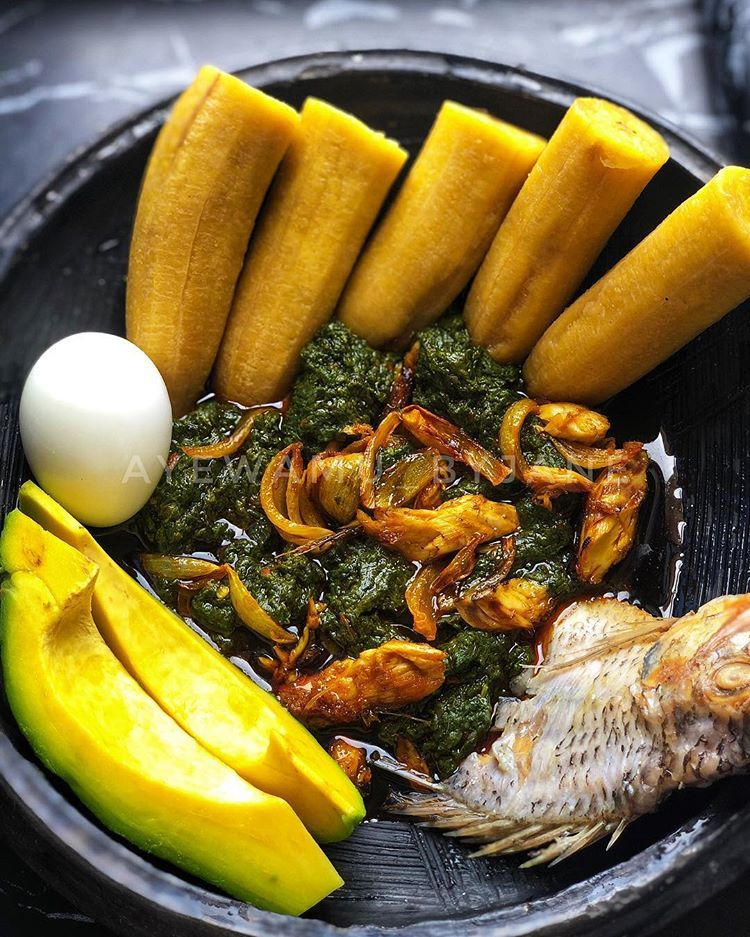
Source: Pinterest Source: In Amma's Kitchen -
Aprapransa, formerly known as 'Akplijii (or Akplidzi),' is a Ghanaian GaDangme (or Ga) delicacy made by heat combining (or blending) roasted maize flour with a holy GaDangme broth known as 'Palm Nut Soup.' 'Palm Nut Soup,' an important base ingredient in the preparation of 'Akplijii,' is an ancient sacred soup of the GaDangme people, and is always prepared as a complement to another sacred corn flour meal called 'Kpokpoi(or Kpekpele)' during a 'Ancient Religious Hebraic Harvest Festival' called 'Homowo.' The GaDangme people introduced these techniques to 'Ancient-Ghana' and taught all the tribes how to make this wonderful 'Palm Nut Soup,' just as the 'Akans' taught all the tribes how to make their delicious soup named "Abunebunu(or Ebunuebunu)."
Aprapransa as a complete supper is not a cuisine that is regularly available on Ghanaian streets or made on a daily basis in the home. The Akan tribe typically serves it on important occasions such as marriage rituals, naming ceremonies, birthday celebrations, family cookouts, and so on. Its name comes from the fact that it is a complete meal with soup/stew that only just a wipe of the hand (prapra wo nsa) to consume.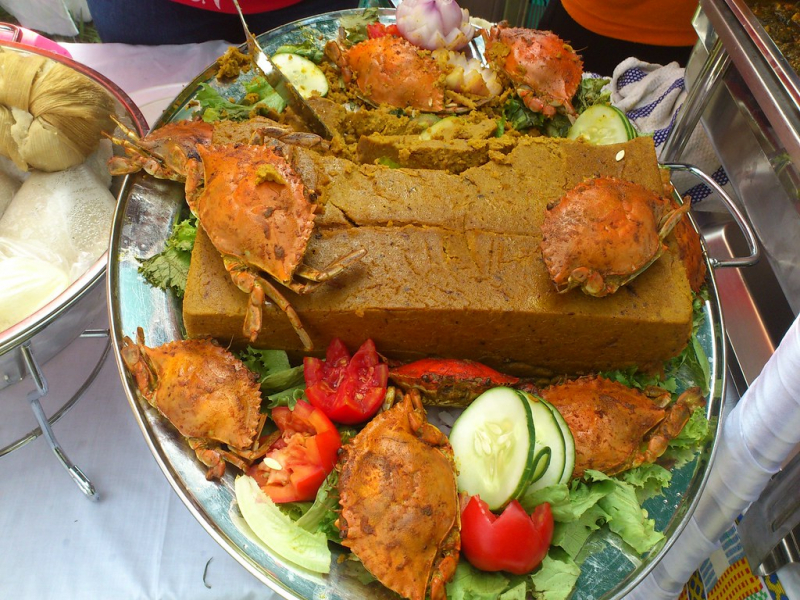
Source: Flickr Source: Debzies Delight -
Banku is a Ga-Dangme-language name for a cooked somewhat fermented blend of maize dough and cassava dough formed into single serving balls. It is unmistakably a Ga-Dangme phrase. In the Ga-language, there are comparable tonal phrases with distinct meanings, such as Inku (for pomade), Ashanku (for a variety of a plantain fritter called 'Tatale' in the Ga-language), and many more ending in 'Ku.'
Banku is distinct from any of the Ewes' traditional Akple product types. It is a Ghanaian delicacy of GaDangme heritage that is cooked in hot water by a mixture of fermented maize and cassava bread into a smooth, white paste and eaten with soup, okra stew, or a pepper sauce with fish.
It is mostly consumed by the people of Ghana's southern regions, including the Ewe, Fante, and Ga-Adangbe people, although it is also consumed in other parts of the country. Banku is found across Ghana and is one of the main meals eaten by many tribes, however it is most closely linked with the Ewe people. The GaDangme (or Ga) people have a softer version of the meal called Banku, whilst the Fante people have a somewhat drier version of the dish called ɛtsew.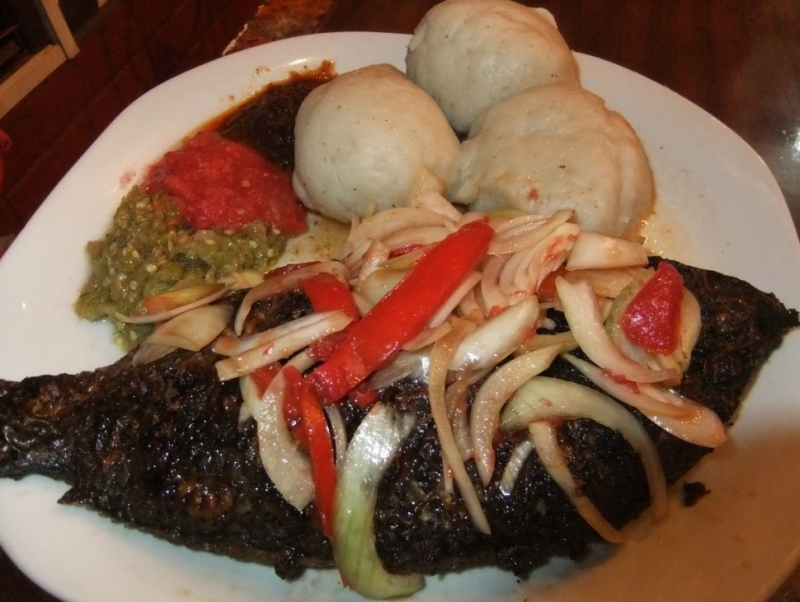
Source: Africa-OnTheRise Source: BLESSINGS CREATIVITY -
Bofrot is a famous street dish that is served in a newspaper wrapper. Palm wine is traditionally used in place of yeast, but it's more difficult to get than yeast, so I've used the latter here. These dairy-free Ghanaian beignets may also be loaded with chocolate sauce or strawberry jam for extra flavor—perfect for celebrations and regular eating.
Bofrot is a mildly spicy and sweet yeasted flatbread that is deep fried in oil. Ghana and other African countries produce this African doughnut. This doughnut is often cooked in the morning and served with fermented corn porridge (Koko) as part of a breakfast menu in Ghana. Bofrot or puff puff recipes have varied names depending on where you are on the continent. It's also known as puff puff, Toogbei, Mikate, Mandazi, and beinye in some locations.
This dish goes well with cereal or plant-based milk. Bofrot is served with hot chocolate or fermented millet porridge in Ghana. This bofrot goes well with my Fermented Teff Porridge.
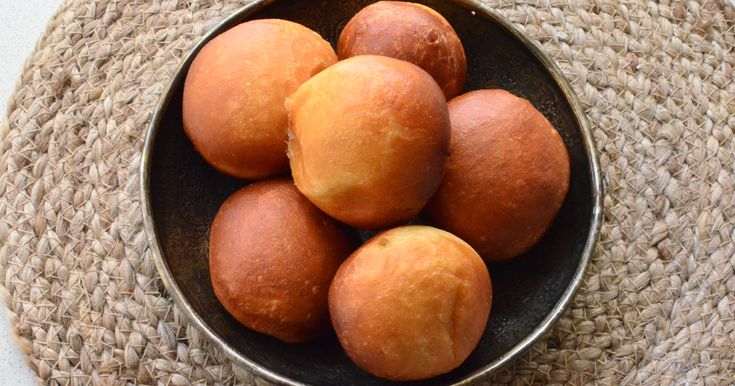
Source: Pinterest Source: Ndudu by Fafa -
Chofi is mostly a street snack that is created from turkey tails. The tail is cooked and seasoned with garlic and onion. The meal is accompanied by banku, another classic Ghanaian cuisine, and fried yams. The meal is also known as Tsofi and is popular among households, particularly as an Easter dinner. The dish's greasy and meaty taste appeals to people of all ages.
The fatty delights (also known as tsofi or chofi) were outlawed in Ghana in 1999 due to the dangers they posed to residents' health. "It is worth mentioning that, as an animal fat, the fat from turkey tail is likely to have a high proportion of animal fats, which are connected with high cholesterol levels and, as such, are implicated in the occurrence of many ailments, including heart disorders." Saturated fat diets have been linked to an increased risk of lung, breast, colon, and brain cancer.
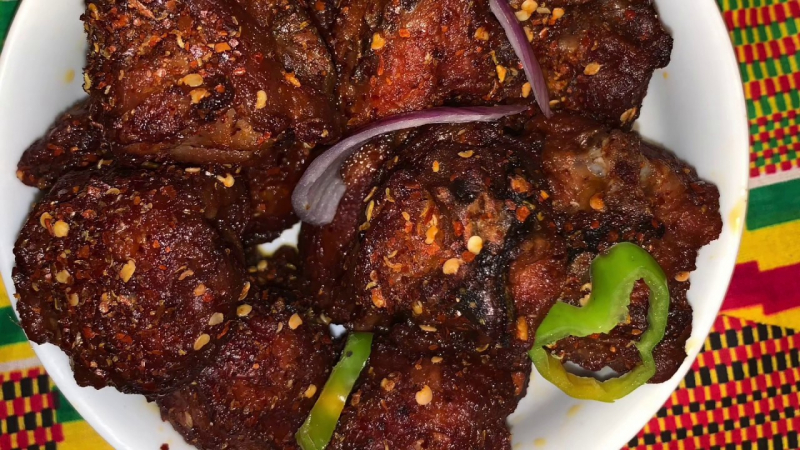
Source: Youtube Source: Latifah Cooks -
Red red is a Ghanaian meal made of black eyed peas and plantain fried in palm oil/vegetable oil. The meal gets its name from the red hue imparted by the red palm oil (zomi) and fried plantain. Fish, such as canned mackerel or pilchards, black eyed peas, scotch bonnet peppers, onions, oil, and tomatoes are common ingredients in red red. In Ghana, it is frequently referred to as "kokoo ne beans." Red red is commonly eaten with fish, although it can also be served as a vegetarian dish. For a full dinner, serve with fried plantain, avocado, rice or garri.
Red red is a famous Ghanaian stew made with beans, red palm oil, tomato paste, and seasonings such garlic, ginger, chili, and onions. Some cooks choose to add meat or fish broth to the stew, although this is entirely optional. Traditionally, the stew is served with fried plantains on the side. This slow-cooked black-eyed peas stew is the ultimate belly warmer that will keep you warm and satisfied. The traditional Ghanaian meal red red is prepared with West African beans, palm oil, and tomatoes. A delicious and filling stew suitable for the whole family. This wonderful Ghanaian dish mixes a creamy beans stew with fried plantain for the ideal warming main course.
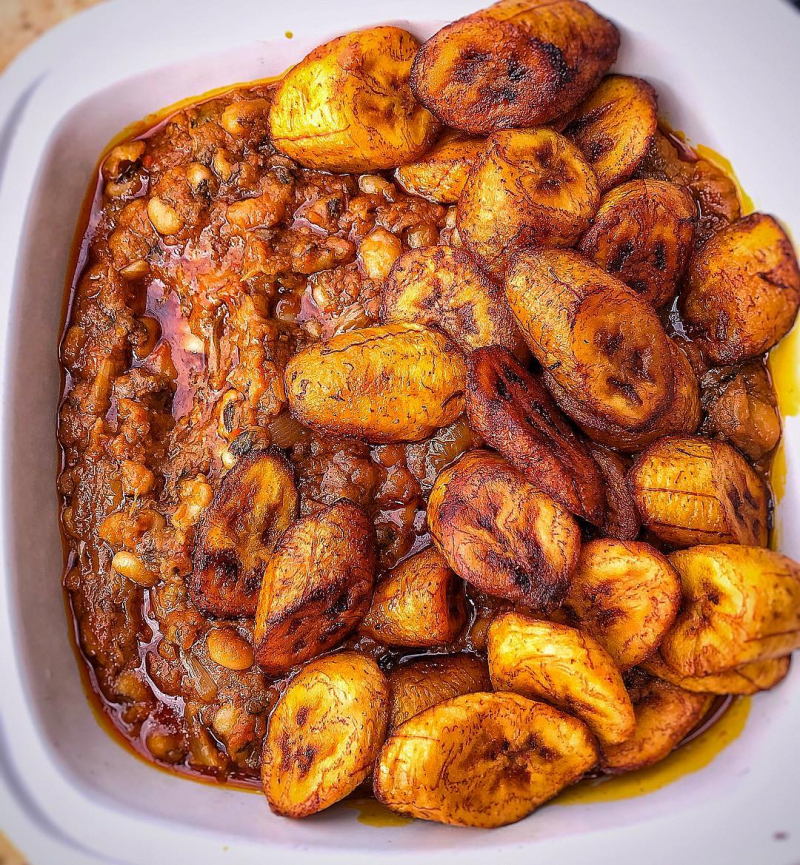
Source: Dream Africa Source: DAKTY4YOU -
Kenkey is a traditional Ghanaian meal prepared from fermented white maize that is popular among the Ga people of southern Ghana. The Ga tribe refers to it as komi. The Fante tribe, who dwell in the country's center, refers to it as dokono. Kenkey is frequently served with fried fish in West Africa, where fishing is popular and fish is typically eaten fresh and fried, cured, or smoked for improved preservation.
Shito, a sauce created from smoked salmon and raw vegetables like as fresh peppers, is also used to provide a lot of freshness. This is a rather comprehensive meal.
Kenkey's acidity complements fried fish quite well. Because it takes a long time to finish, it can be prepared ahead of time. This meal is iconic of Ghanaian cuisine, and it is eaten all year. It is also the most often fermented item in Ghanaian cuisine. Kenkey is so popular in Accra, Ghana's capital, that there is even a kenkey festival conducted once a year where you can try it with fries, stews, and salads.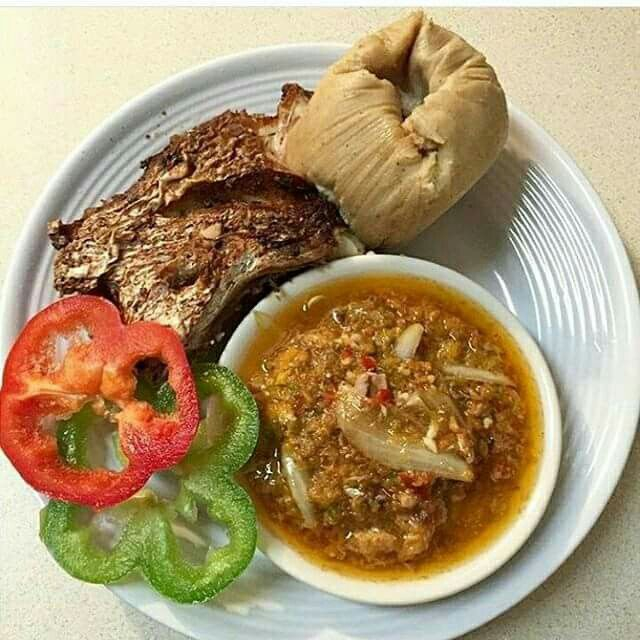
Source: Pinterest Source: Mrs Drewry Food -
Kontomire stew is a stew made from cocoyam leaves (known as "kontomire" in the Akan language), which is routinely produced at home and is particularly popular in Ghanaian cuisine. Kontomire stew is eaten with a variety of side dishes in Ghana, including steaming rice, boiled yam, and plantain. Palava sauce, as it is known in English, is supposed to have originated with the inhabitants of Elmina. The utilization of a range of green vegetables, native herbs, and spices is one of the peculiarities of Ghanaian cuisine. The Kontomire stew is created with boiling delicate kokoyama leaves, salted fish, and boiled eggs and is delicious with boiled veggies and avocados.
Ghana has always produced delicious meals, and this stew is no exception. These delicious, delicate cocoyam leaves are incredibly nourishing and filling. Kontomire offers several health advantages, including cancer prevention since it fights free radicals. Because of its minimal fat and high protein composition, it also aids in weight loss. This fantastic meal is high in fiber and iron, making it excellent for youngsters and suggested for adults suffering from anemia. Sauce de Palava Kontomire stew goes well with yam, plantain, or rice. The scent and flavor of the kontomire stew are truly priceless.
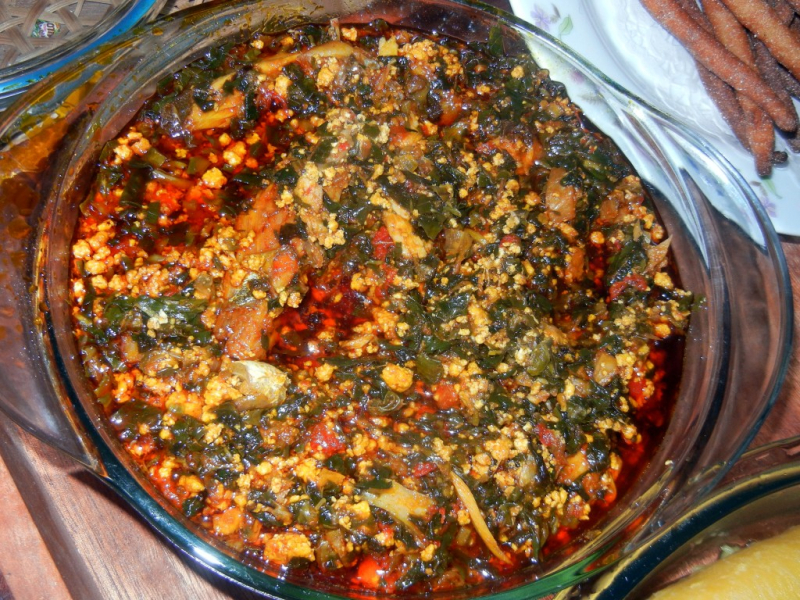
Source: ellablogpedia - WordPress.com Source: Honeyhands Kitchen -
Kelewele (pronounced Kay-lay-way-lay) is a famous Ghanaian meal comprised of seasoned fried plantains. It is frequently served with rice and bean stew or as a vegetarian dessert or snack on its own. Street sellers in Ghana are ready to offer you this wonderful West African dessert. Kelewele is typically marketed as a street snack, however it is a fairly simple dish to prepare at home. When prepared at home, it is frequently served as a side dish to a major entrée such as grilled meats, stews, or even as dessert. Plantains are sliced into pieces, slices, or cubes, seasoned, then fried until caramelized brown.
Kelewele, or Spicy Fried Plantain Cubes, is a famous and well-loved Ghanaian dish, and it's a winning recipe since all of the components are cupboard spices. Onions, ginger, cayenne pepper, and salt are common seasonings used to prepare these Spicy Fried Plantains. However, depending on personal inclination, spices such as anise, cloves, cinnamon, cardamom pod, and nutmeg can also be added.
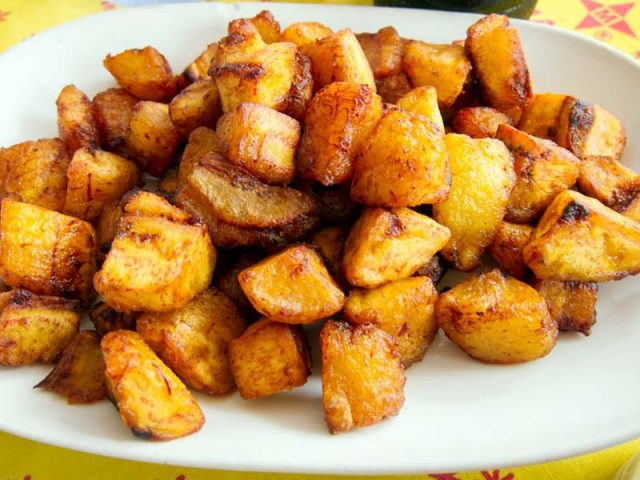
Source: flavorverse.com Source: Nanaaba's Kitchen -
Suya, also known as tsire, is a spicy pork skewer that is popular in West Africa. It is also consumed in Sudan, where it is known as "Agashe." Suya is traditionally prepared from skewers beef, ram, or chicken. Kidney, liver, and tripe are also utilized as innards. The thinly sliced beef is marinated in a variety of spices, including peanut cake, salt, vegetable oil, and other seasonings, before being grilled. Suya is topped with a generous amount of dried pepper combined with spices and sliced onions. Halal meat preparation procedures are typically utilized, especially in the northern portions of Nigeria, where the suspicion of nonconformity to Muslim dietary regulations in Suya cooking has been known to trigger riots. Kilishi is a dried form of Suya.
There is no conventional formula for making the complex blend of spices and additions that comprise the Suya marinade (known as Yaji) and the spice mix served with it. Ingredients may differ based on personal and geographical preferences. Suya originated in Northern Nigeria, but it has infiltrated Nigerian society, being accessible to everybody and available everywhere. It has been said to as an uniting element in Nigeria. Suya has become a Nigerian national cuisine, with many areas claiming excellence in their recipe and cooking methods, while similar grilled meat dishes are widespread in many West African nations.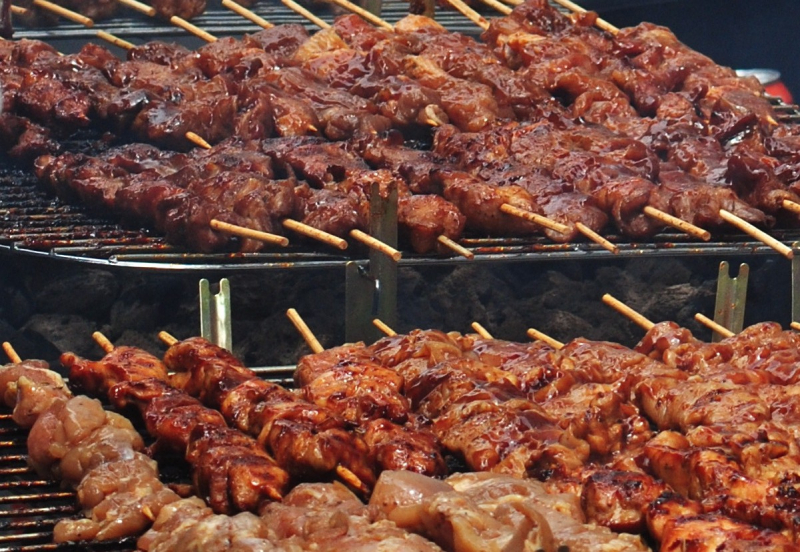
Source: MyWeku Tastes Source: Mrs Drewry Food -
Tuo zaafi, commonly known as T.Z or Saakbo in Northern Ghana, is a popular meal. It is not just prevalent in Ghana, but also in various regions of West Africa, particularly in Nigeria, Mali, Burkina Faso, and Niger. The three primary sorts are maize, millet, and red millet, and in addition to these, we have ones to which you can add corn dough or cassava flour, and these types are quite popular among Kotokolies and Chambas.
Tuo Zaafi is a staple cuisine in northern Ghana, and unlike other indigenous delicacies such as banku, fufu, and yam, T.Z. is not available on the menus of many eateries around the country. It wasn't until lately that several restaurants began include it on their menus. Tuo Zaafi is often cooked using maize or millet flour. It has a delicate texture and is slightly sticky. It is often served with your choice of soup, although the most frequent soup connected with T.Z. is "Ayoyo" or dry okra, also known as "busheshe kebewa." The ingredients are inexpensive and readily available at all times.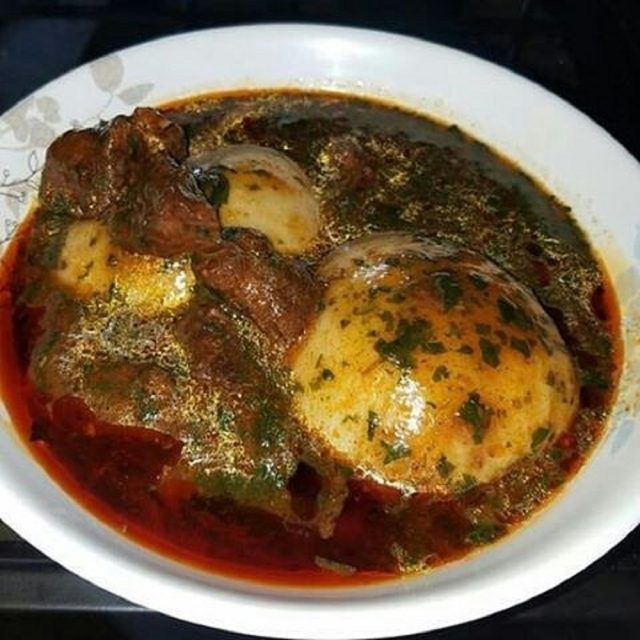
Source: flavorverse.com Source:Ndudu by Fafa














